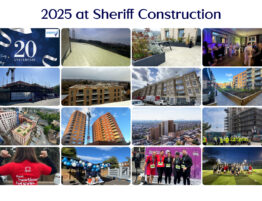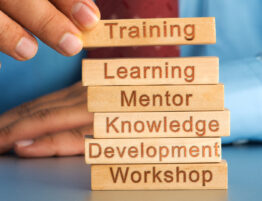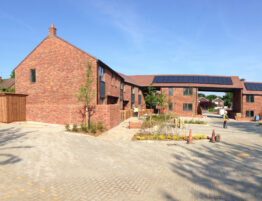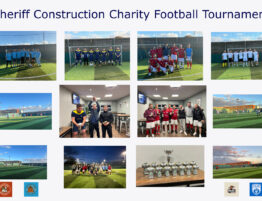
Did you know that around one in three adults in the UK are deaf, have hearing loss or experience tinnitus (a persistent ringing, buzzing or humming sound in the ears with no external source)?
Given this prevalence, it’s very likely you work alongside someone who is affected and so, as this week (6-11 May) is Deaf Awareness Week, we’re shining a light on the communication challenges people with hearing loss can face as well as what we can do to be more inclusive communicators on site and beyond. Read on to find out more.
What challenges do deaf people face?
For many people who are deaf or have hearing loss, everyday communication can be challenging. They may:
- Rely on lipreading, facial expressions or hearing aids to communicate.
- Struggle to follow conversations in noisy environments.
- Find phone calls or unexpected verbal instructions difficult.
- Feel isolated or excluded from team discussions.
How can we make construction more deaf-aware?
Environments like construction sites can be especially difficult for those with a hearing impairment. There’s constant background noise, people are often wearing face coverings and fast-paced conversations are common.
The good news is there are lots of ways to make things easier and create a workplace that is supportive for everyone (even on a busy construction site). There’s not even a need for any specialist training – just a bit more awareness and consideration.
Here are some top tips from RNID:
In face-to-face situations:
- Make sure you’re facing the person and speak clearly (but don’t shout).
- Use plain language and be patient – don’t be afraid to repeat or rephrase something if needed.
- Get their attention first – use a simple gesture like waving or tapping lightly on the shoulder.
- Minimise background noise or move to a quieter spot if that’s possible.
- Offer to write things down or use a phone screen to type messages.
It’s important to remember that communication needs vary. So, while some people use British Sign Language (BSL), others prefer to write things down. Some people might just need extra time or a quieter space to understand what’s being said. Be prepared to adapt to what suits the individual.
On the phone:
- Always ask if the person is comfortable using the phone or would prefer to communicate by text/ email.
- Speak clearly, avoid jargon and summarise regularly.
- Don’t shout – it can distort sound and be uncomfortable for hearing aid users.
- Consider text relay services if available.
In a virtual meeting:
- You can make your online meetings more inclusive by following simple practices like ensuring only one person speaks at a time, not covering your mouth, keeping your camera on and using captions. See more tips here.
Making our communications inclusive
Deaf awareness isn’t about getting everything right all the time – it’s about being open, patient and willing to adapt. Whether you’re giving instructions, answering a query or having a chat at break time, a little thought goes a long way.
Let’s take this week as a reminder to check in with our colleagues, be mindful of different communication needs and make sure everyone feels heard and valued.
Find out more
RNID is the national charity supporting people in the UK who are deaf, have hearing loss or tinnitus. Go to their website to find out more.
You can also sign up to learn some easy BSL phrases and receive more top tips around communication in your inbox here.
And why not start practicing fingerspelling (the British Sign Language alphabet)? While it’s not sign language on its own, it can be useful for things like spelling out the names of people and places. See the RNID Fingerspelling card here.
06.05.2025
Feature image: Freepik








